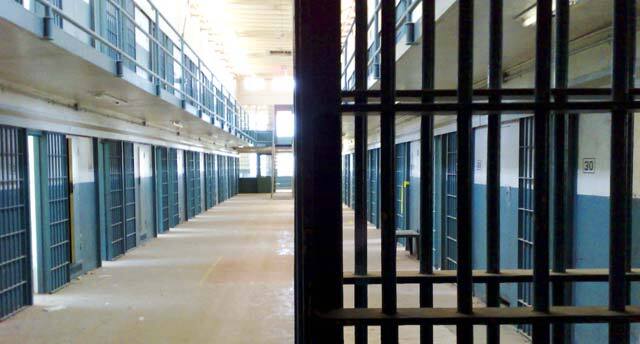This story is free to read because readers choose to support LAist. If you find value in independent local reporting, make a donation to power our newsroom today.
This is an archival story that predates current editorial management.
This archival content was written, edited, and published prior to LAist's acquisition by its current owner, Southern California Public Radio ("SCPR"). Content, such as language choice and subject matter, in archival articles therefore may not align with SCPR's current editorial standards. To learn more about those standards and why we make this distinction, please click here.
Another 'Oops!' for Corrections Spokeswoman Thornton?*

Photo by o2ma via Flickr
Last week, news that one branch of what remains of the Manson family tree, Susan Atkins, was seeking a compassionate release due to an undisclosed and likely terminal illness triggered waves of reaction from the public, many of whom believe convicts of Atkins' ilk should remain incarcerated for the duration of their life sentences.
In public statements made regarding Atkins' 37 years' imprisonment to date, California Department of Corrections and Rehabilitation spokeswoman Terry Thornton said that Atkins was currently the longest-serving female inmate in state history.
In fact, this is only partially correct. On March 29, 1971, Atkins was sentenced (initially to death; the sentence was commuted to life in prison in 1972) along with two other women: fellow Manson family members Patricia Krenwinkel and Leslie Van Houten. Van Houten, however, was freed on bond during a retrial in the late 70s, whereas Krenwinkel remained incarcerated. That means that Thornton misspoke; Atkins is not in fact the longest-serving female inmate in California, but rather one of the two longest-serving women.*
Although it is a minor error--a sin of omission, perhaps--it is an error nonetheless, and in recent months Thornton has been having to save face over many errors made by the Department she represents. The most egregious one, quite possibly, was the mistaken release of former SLA member Sara Jane Olson in March.
Following Olson's return to prison, Thornton spoke with Kari Moran of local NPR station KPCC and explained why "mistakes" like a one-year miscalculation in release date can happen in her department, particularly on a case as high in profile as that of Olson. Thornton told Moran:
I've been with this department for nine and a half years, going on ten years, and I have heard cases, only a handful, you know, a year, which isn't a lot when you're looking at the big universe. We have about 170,000 people incarcerated, so, you know, two or three or four a year of early releases because of miscalculations, isn't a lot in the grand scheme of things.
Thornton goes on to say, in the obtuse manner favored by spokespeople when pressed, that she was unsure who was to blame nor what might need to change within the system as a result. She said: "Calculating release dates can be extremely complicated, and a lot of people that, the case records people - and I'm not saying it was their fault, I don't know where the fault lies at this point - but they do it on paper and pencil. It's a very archaic way of doing it, and human beings are not perfect, as you well know."Human error is indeed forgivable, but perhaps what is being spotlighted by the largely significant error in the Olson case, and the minor misspeaking regarding Atkins, is the overall state of Corrections, particularly women's corrections services and facilities, in the state. A 2001 report by the California Women's Commission reveals some of the system's serious flaws, pointing out that "women prisoners suffer from lack of adequate health care," and that "most women's prisons have no licensed medical personnel." This is most likely why Atkins had to be released to a local hospital to receive care for her recent illness rather than be treated in-house--at the taxpayer's expense, no less. How many other prisoners receive this treatment? And does this not highlight the fact that perhaps something is indeed broken, and needs to be fixed rather than excused? (A newsletter focusing on reform in the Department was released in 2007).
Furthermore, the report claims that "sexual abuse of those incarcerated is an outgrowth of a systemic problem," which is possibly how Thornton once again found herself having to explain away a February 2, 2008 incident in Corona's California Institution for Women (the same prison that housed Atkins until her transfer to a hospital) in which inmates discovered their allegedly private strip searches were actually being watched on monitors by prison employees. Thornton denied the story, and suggested it was being over-played. In an AP article published on WTOP's site, she is quoted as explaining: "No one was standing around watching this. It was 'Oh my gosh, the monitor was on.'"
Another "oops!" perhaps?
Meanwhile, Susan Atkins awaits word from Thornton's Department on whether she can enjoy her last remaining days a free woman, despite her sentence of life in prison. Those following the case, regardless of what side they stand on, are certainly hoping there won't be another "mistake."
*See here for updated correction.







